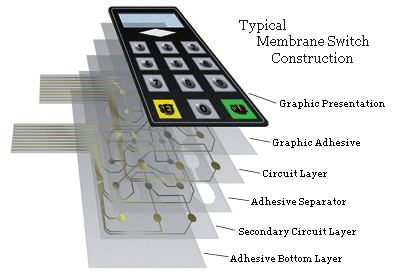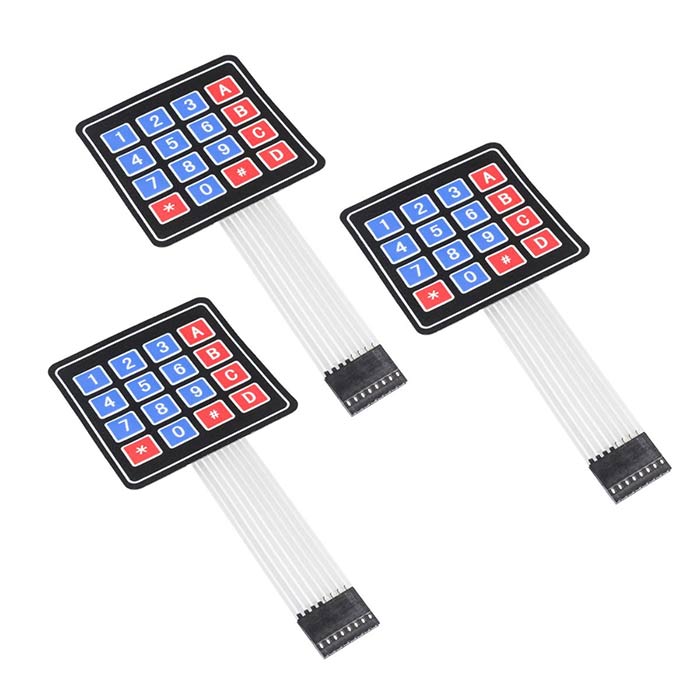Everything About Membrane Layer Switch: Recognizing Its Layout and Performance
When you think of the control interfaces in modern-day gadgets, membrane layer buttons typically come to mind. These parts are greater than simply buttons; they mix style and performance flawlessly. Comprehending how they work and what makes them effective can change your point of view on daily electronics. There are nuances to their style and performance that you could not be conscious of. Let's explore what sets membrane layer switches over aside from various other control systems.
What Are Membrane Switches?

Their seamless nature makes them easy to tidy and resistant to dirt and moisture, a vital function in numerous atmospheres. Membrane switches can likewise be tailored concerning form, dimension, and graphics, enabling suppliers to create one-of-a-kind interfaces tailored to details products. And also, they're lightweight and thin, which helps in decreasing the overall bulk of gadgets. On the whole, membrane switches play a considerable role in improving user experience across a vast variety of applications.
How Membrane Layer Switches Over Job
When you push a key on a membrane layer switch, it triggers a simple yet reliable mechanism. membrane switch manufacturer. The leading layer, frequently made of adaptable material, pushes down onto a conductive layer below it.
You'll see that the tactile comments varies based on the button style, providing either a soft click or a more obvious feedback. As soon as you release the trick, the membrane go back to its initial position, reopening the circuit and quiting the signal. This procedure occurs virtually instantaneously, making certain a receptive customer experience.
Membrane layer buttons are prominent due to their toughness and resistance to dirt and dampness, making them optimal for numerous applications, from household home appliances to medical devices. Understanding this procedure helps you appreciate their widespread use.
Trick Elements of Membrane Buttons
Understanding the crucial parts of membrane buttons is fundamental for grasping their functionality and style. At the core, you'll find the graphic overlay, which gives the aesthetic user interface for customers. Beneath that, there's a spacer layer that divides the circuit layers, guaranteeing that they don't make contact up until pushed. The circuit layer is where the magic happens; it contains conductive traces that finish the circuit when you press the button. One more important aspect is the sticky backing, allowing the button to stick to surfaces securely. The protective layer shields versus ecological aspects and use, prolonging the button's life-span. Each component plays a significant duty in making certain trusted performance and individual interaction. By understanding these elements, you'll gain insight into how membrane layer changes operate and their significance in different applications.
Materials Utilized in Membrane Layer Switch Layout
The efficiency and durability of membrane layer switches heavily depend on the materials utilized in their style. You usually come across polyester and polycarbonate as primary substrates as a result of their exceptional toughness and adaptability. These products stand up to scratches and chemicals, making them excellent for demanding settings.
The conductive layers commonly utilize silver or carbon, selected for their dependability and conductivity. membrane switch manufacturer. Silver gives premium efficiency, while carbon is a cost-effective alternative. For the overlay, you might think about a matte or glossy finish, relying on your visual requirements and individual experience
Adhesives play a necessary function also; they bond layers securely and ensure durability. Make specific to choose adhesives that stand up to ecological aspects like temperature level and humidity. Finally, do not forget the importance of an excellent printing strategy for graphics, as it improves both capability and visual appeal. Choosing the ideal products will guarantee your membrane switch stands the examination of time.
Design Considerations for Membrane Layer Buttons
While creating membrane layer buttons, it's vital to consider numerous factors that affect their performance and user experience. Start by concentrating on the layout and switch dimension; ensure they're instinctive and Recommended Site simple to navigate. Think about the tactile comments you want to supply-- will individuals need a visible click or a softer touch? Additionally, think concerning the products you'll utilize, as they'll influence sturdiness and aesthetic appeals.
Don't forget the visuals style; clear labeling and color contrast are considerable for exposure. Verify your design suits environmental elements, like dampness or temperature level variations, which might affect performance. Lastly, remember the relevance of screening models with actual individuals to gather comments and make essential adjustments. This iterative process helps you refine the layout, validating it satisfies both useful and visual requirements effectively. By thoroughly taking into consideration these aspects, you'll produce a membrane button that boosts use and fulfillment.
Applications of Membrane Layer Switches
Membrane layer switches are flexible parts discovered in various applications, from commercial equipment to customer electronics. You'll see their impact in equipments that need durable user interfaces and in tools that gain from sleek layouts. Recognizing these applications helps you appreciate the capability and usefulness of membrane switches in everyday modern technology.
Industrial Equipment Usage
When you're aiming to boost the performance of industrial tools, membrane buttons use a trustworthy remedy that combines resilience with user-friendly design. These buttons are best for harsh settings, giving resistance to dirt, wetness, and chemicals. You'll find them in control panels for manufacturing machines, HVAC systems, and medical tools, where precision and responsiveness are essential. Their low account implies they fit perfectly right into numerous devices, conserving important room while preserving ease of use. With adjustable graphics and backlighting options, you can produce an instinctive user interface for operators, enhancing effectiveness and security. And also, their long life expectancy minimizes upkeep expenses, making them a smart investment for your industrial applications. Welcome membrane layer buttons to enhance your procedures and improve general performance.
Customer Electronic Devices Integration
In the domain of consumer electronics, membrane buttons play a crucial duty in enhancing customer interaction and gadget functionality. You'll discover them in gadgets like microwaves, remotes, and pc gaming consoles, supplying a smooth means to connect with modern technology. Their streamlined layout permits for simple combination into different products, making controls intuitive and user-friendly. With their ability to include graphics and backlighting, you can appreciate a modern-day visual that matches the device's overall appearance. Membrane layer switches also guarantee durability and resistance to dirt and dampness, prolonging the life expectancy of your electronics. By choosing membrane buttons, you boost not just the functionality but additionally the design of your devices, making everyday interactions smooth and enjoyable.
Benefits and Drawbacks of Membrane Layer Switches
While membrane switches use an array of advantages, they additionally come with some downsides that you ought to think about. One substantial benefit is their compact design, making them optimal for space-constrained applications.

Membrane switches can have a shorter life-span compared to mechanical buttons, especially under hefty use. They can likewise be much less responsive, which might influence individual feedback throughout procedure. Balancing these pros and disadvantages will certainly assist you figure out if membrane layer buttons are the best fit for your task.
Frequently Asked Concerns
How Much Time Do Membrane Layer Changes Normally Last?
Membrane layer switches normally last between 5 to one decade, learn this here now depending upon usage and environmental conditions. You'll intend to review aspects like wear, exposure to wetness, and temperature level fluctuations to assess their longevity properly.
Can Membrane Switches Over Be Personalized for Details Layouts?
Yes, you can personalize membrane switches to fit certain layouts (membrane switch manufacturer). You'll have the freedom to choose colors, he said forms, and formats that match your project's demands, ensuring they mix seamlessly with your general aesthetic
What Is the Cost Range for Membrane Change Manufacturing?
The cost variety for membrane button manufacturing typically falls in between $1 and $10 per unit, depending on elements like design complexity, amount, and products. You can obtain quotes from producers to discover the best alternative.

Are Membrane Switches Water Resistant or Immune?
Membrane buttons can be designed to be waterproof or immune, relying on materials used and construction techniques. If you require them for wet atmospheres, guarantee you specify those requirements throughout the layout procedure.
How Do Membrane Layer Switches Over Compare to Traditional Buttons?
Membrane layer buttons are normally thinner and extra adaptable than standard switches, providing a smooth style. They're typically less complicated to cleanse and incorporate, however could not provide the tactile comments you're utilized to with mechanical choices.
Final thought
